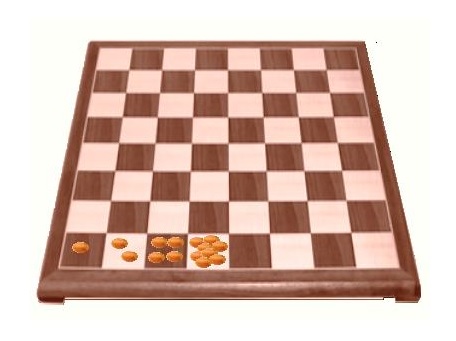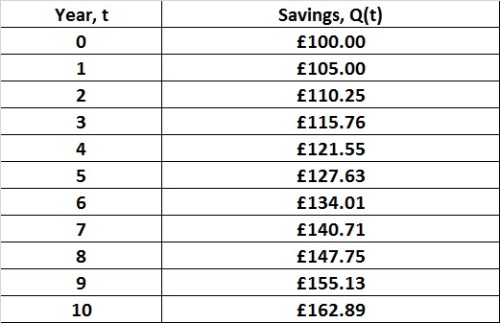In the last post, we saw an example of exponential growth: where something gets multiplied by the same amount again and again and again. When things grow exponentially, they grow very large indeed. Here’s a famous story which illustrates this:
The inventor* of chess** brought his invention to the King, who was so impressed he offered any prize the inventor asked for. The inventor offered the King a choice. He could either pay him 10,000 rupees, or make a payment of wheat based on the squares on the chess board.
To pay in wheat, the King would have to place 1 grain on the first square, 2 grains on the second square, 4 on the third, 8 on the fourth, and so on; doubling the number of grains each square.
The King, who didn’t know his maths, couldn’t believe he was being asked so little and promised to pay in wheat. Bags of wheat were brought in, and a grain placed on the first square, 2 on the second etc. Before long, the first bag was empty and another was called for. That bag soon ran out, and another, and another.
It soon became obvious that more wheat would be needed than in the whole Kingdom!
Some versions of the story say the inventor became the new King, others that the inventor was punished***. We can work out how many grains of wheat the King needed.

The number of grains on the:
1st square is: 1 grain
2nd square is: 1 × 2 = 1 × 2¹ = 2 grains
3rd square is: 1 × 2 × 2 = 1 × 2² = 4 grains
4th square is: 1 × 2 × 2 × 2 = 1 × 2³ = 8 grains
…
nth square is: 1 × 2n = 2n grains
.
Adding these gives: 1 + 1 × 2¹ + 1 × 2² + 1 × 2³ … which is a geometric sequence (click Continue Reading→ at the bottom of the post for a fuller discussion of this).
Given there are 64 squares on a chess board, we can find that the King would have needed 18,466,744,071,709,551,615 grains of wheat! No wonder he didn’t have enough! Continue reading →





